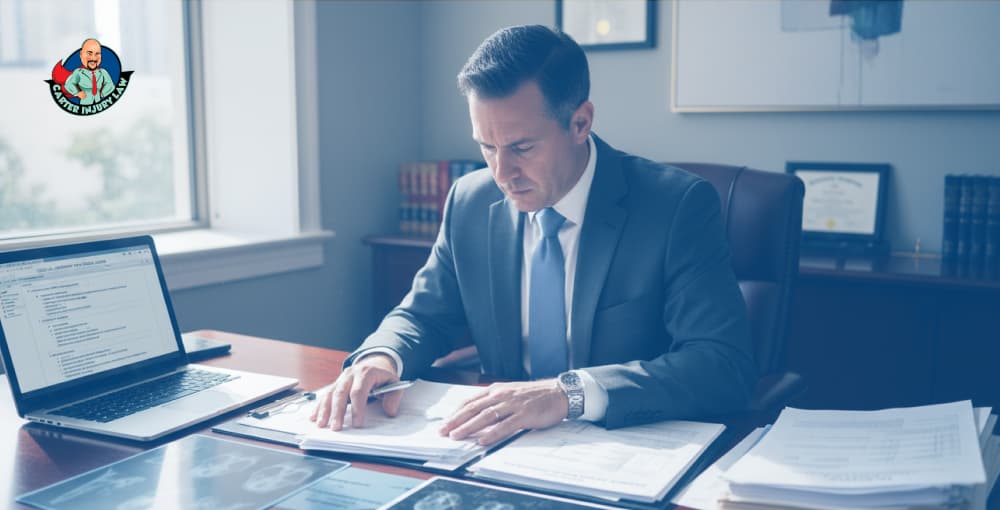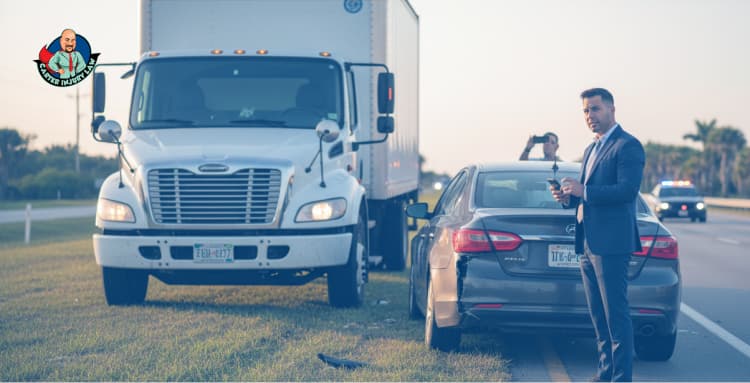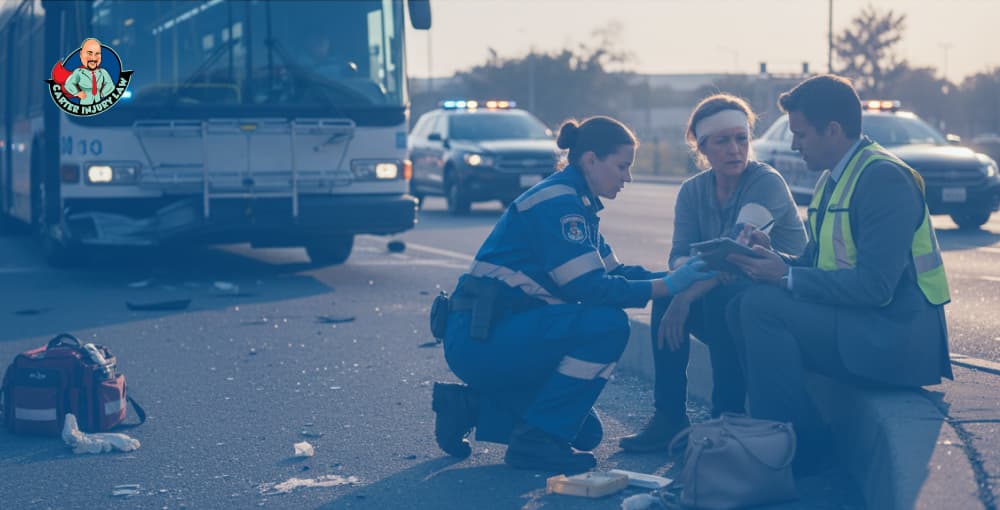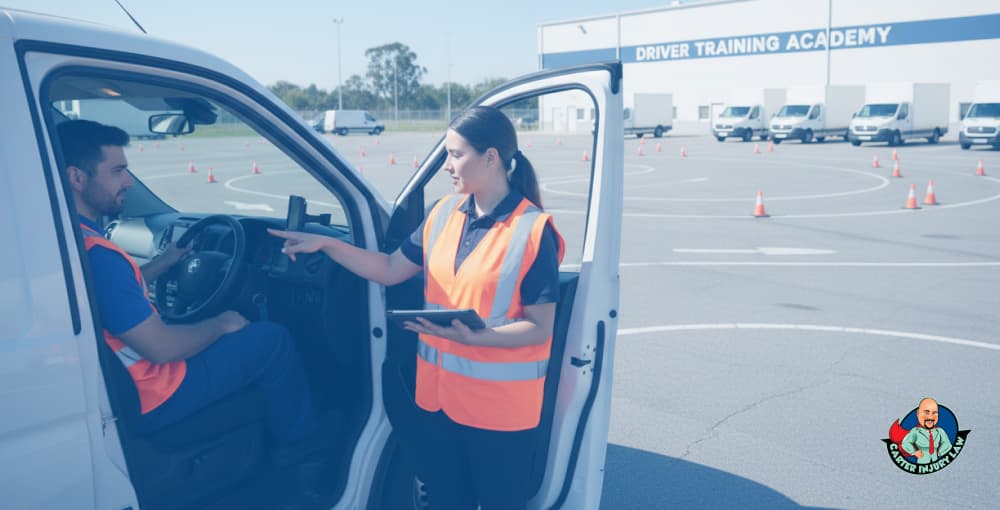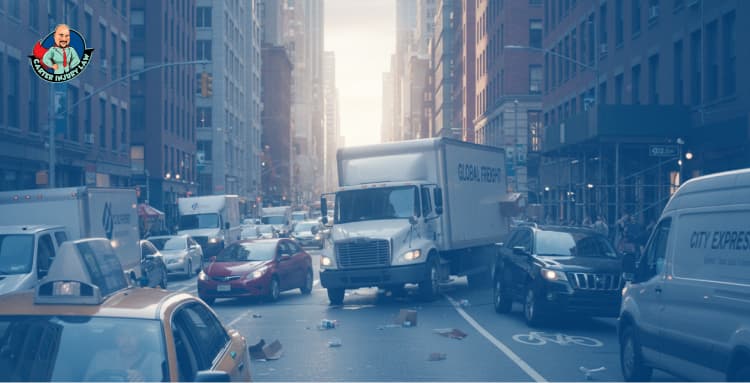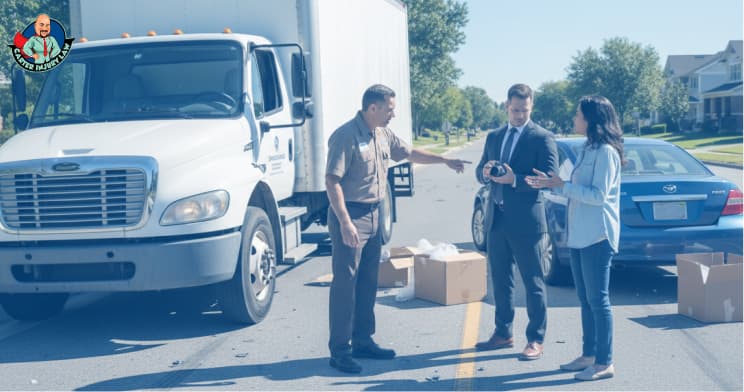Brain injuries from delivery truck accidents are unlike any other kind of trauma I see as a lawyer. They don’t always come with sirens or broken bones. Sometimes my clients walk away from the crash thinking they’re lucky, only to wake up days later in a haze, forgetting conversations, losing focus, and wondering why everything feels slightly out of sync. I’ve learned over the years that the real damage often hides behind a calm surface. The mind goes quiet before it begins to fall apart.
In my practice at Carter Injury Law, I’ve seen these injuries turn strong, capable people into strangers to themselves. One client told me it felt like living underwater. Every thought slowed, every sound distant. And just when they start to question their own reality, the insurance companies step in, armed with their favorite argument that “there’s no visible proof.”
That’s where I come in because the proof is there, buried in medical scans, hidden in delivery logs, and coded inside the truck’s black box. The question isn’t whether it exists. It’s whether I can uncover it in time.
(1) The Invisible Damage
When I first meet someone with a brain injury from a delivery truck accident, it reminds me of the movie Memento. You know, the one where the main character can’t form new memories and pieces together his life through notes and tattoos. That is what it can feel like to live with a traumatic brain injury. Every day becomes a puzzle, and even simple tasks feel unfamiliar.
In my office, I walk clients through what the injury really does. It is not always pain you can point to. It is confusion, headaches that come and go, dizziness that hits in the middle of the supermarket, and words that disappear before you finish your sentence. Insurance companies often see these injuries and think they are minor because they cannot be measured on a checklist. That is why medical evidence becomes our anchor.
I work with neurologists, neuropsychologists, and life care planners to document every symptom and connect it to the crash. Each MRI, each cognitive test, and each doctor’s note becomes a piece of the story. The story is not just about an accident. It’s also about how someone’s life was rerouted, often in ways that are hard to see but impossible to ignore.
(2) How I Build a Case That Holds Up

When I take on a brain injury case from a delivery truck accident, the first thing I do is step into the shoes of my client. I need to see the accident not just as a moment, but as the event that changed their daily life.
If you suffered a brain injury from a delivery truck accident, the way to win starts with proof and patience. Medical records, neurological reports, and the truck’s black box data all become part of the story that links the crash to what you live with now
I start by gathering evidence that goes beyond the obvious. In delivery truck accidents, the details are often hidden in layers of corporate records and digital data. Some of the things I look for include:
Truck telematics and black box data can show speed, braking, and the moments leading up to impact. It often tells a story the driver or company would rather keep quiet.
Delivery logs and schedules reveal whether drivers were under pressure to meet unrealistic deadlines. Fatigue and stress are common contributors to accidents.
A poorly maintained truck can be as responsible for the crash as the driver. These documents often uncover patterns of negligence.
Every scan, test, and doctor’s note carries weight. I work side by side with medical specialists to trace each symptom back to the crash and make sure its impact is fully understood.
Neighbors, passengers, and even other drivers can confirm details that companies may try to obscure.
Once I have the evidence, I map it to the client’s life. I detail how the injury has affected their ability to work, their daily routines, and even their relationships. This is what changes a medical report into a narrative a judge or jury can understand.
I also make sure the client knows what to expect. Brain injury cases are not quick or simple. They require patience, repeated testing, and constant communication with medical and legal experts. But when every piece falls into place, the invisible damage becomes visible. The goal is not just to prove the accident happened, but to show exactly how it changed a person’s life and why justice requires accountability.
This process takes time, but it is the only way to hold both the driver and the delivery company responsible for the life-altering impact of a brain injury. It is carefully done, it is herculean, and it is necessary to win cases that too often seem impossible at first glance.
(3) Facing the Choices That Caused the Crash
In most delivery truck accidents, the driver is only part of the story. I have seen countless cases where companies push drivers to meet impossible schedules, stacking hours in a way that makes crashes almost inevitable. The law does not excuse negligence just because a company hides behind corporate layers or claims their driver acted alone.
When I take on a case, I dig into company practices. I review training records to see if drivers were properly prepared. I examine rest schedules to determine whether fatigue was a factor. I look for patterns of complaints or prior incidents that show systemic issues. Every memo, email, or internal report can reveal how a company prioritizes speed over safety.
I also talk to experts who can translate these findings into legal arguments. Safety engineers, traffic analysts, and human factors specialists show that the accident was not random but a consequence of preventable choices.
Holding a company accountable goes beyond compensation. It sends a message that corners cannot be cut when lives are at stake. I have seen families gain not just financial recovery, but confidence that someone in the system noticed, understood, and acted to ensure it does not happen to others.
In these cases, the strength of the legal strategy comes from combining evidence, expert testimony, and a clear demonstration of responsibility. The law may seem slow, but when all the pieces come together, it forces accountability where it is due.
(4) Life After the Impact

After the courtroom strategy is in motion, my focus shifts to what happens every day for my clients. Brain injuries from delivery truck accidents do not follow a neat timeline. Some mornings are clear, some afternoons bring confusion, and nights often carry exhaustion that no sleep can fix.
That’s why I work closely with medical teams to track progress and adjust documentation as symptoms evolve. Sometimes this means updating cognitive assessments or gathering new therapy notes. Other times it is simply being a constant point of contact, explaining what insurance adjusters might misunderstand or clarifying the importance of a new report in the legal file.
I also encourage clients to record the small disruptions that reveal the injury’s impact. Missed meetings, forgotten appointments, or difficulty concentrating on familiar tasks become part of the evidence. These details may seem minor in isolation, but together they demonstrate the real-life consequences of the accident.
Beyond the process, I make sure clients feel supported in reclaiming control over their lives. This could mean connecting them with support groups, rehabilitation programs, or vocational experts who help adapt work and daily routines.
Every step I take with a client in recovery strengthens the case and, more importantly, reinforces that their experience matters. Winning in court is essential, but helping someone regain confidence, stability, and a sense of normalcy is the part of the work that defines the real impact of our legal efforts.
(5) Justice for a Life Changed

When someone reaches out after a delivery truck accident, the first call is often the hardest. I hear the hesitation, the worry about costs, the uncertainty about whether the injury is serious enough to pursue. At Carter Injury Law, I tell every client this upfront: you do not pay unless we win. Our contingency fee structure means that our goals are fully aligned with yours. We succeed only when you do.
We talk through the accident, the symptoms, and the ways life has changed since that moment. I ask questions to understand the full scope of the injury. These conversations guide the medical evaluations, the evidence collection, and the strategy we will build together.
I also explain what to expect in the coming months. Brain injury cases require patience, coordination with specialists, and meticulous documentation. I make sure clients know that every appointment, every report, and every note contributes to the story we will present in court.
If you or a loved one has suffered a brain injury from a delivery truck accident, the moment to act is now. Call Carter Injury Law today. We will support you through legal issues, all without any upfront fees until your case is won.



